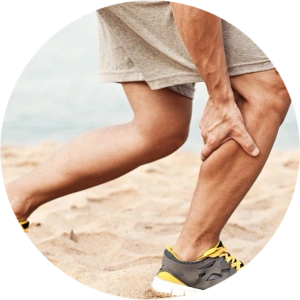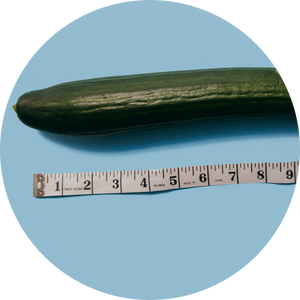A pulled muscle is something many people experience — it's a common injury that happens to your muscle tissue.
When you pull a muscle, it can affect your comfort, strength, range of motion, mobility, and overall quality of life.
What is Muscle Pull?
Whenever you are strength training, doing cardio, or engaging in some other form of physical activity, you are at risk of injuring yourself.
A pulled muscle occurs when a muscle is under too much strain. This strain can happen if you lift too much weight or overextend a muscle outside its regular range of motion. In both scenarios, this strain can cause the muscle tissue to tear.
The more tissue is torn, the more severe the injury becomes.
Difference between muscle pull and muscle growth
Interestingly, muscle tissue tears are sometimes desirable, as they allow for muscle growth.
When you place your muscles under stress by working out, you induce micro-tears within the muscle tissue. These tears are microscopic and help your muscles grow back stronger and bigger when they heal.
Unlike standard microtears – which are needed for muscle growth – a muscle pull is more intense and can debilitate you until the affected tissue is fully healed. A prior muscle pull injury can increase your chances of sustaining an injury later in the same location.
Ideally, you want to work out safely so you can achieve essential microtears without overdoing it. The key is to know your limits and to stay within the parameters of your abilities.
Muscle Strain Recovery
Many people use improper techniques to recover from strained muscles. Unfortunately, these missteps can prolong the injury and worsen the existing damage.
Knowing what to do can help you give your body the best chance of a speedy recovery.
Take a closer look at some essential steps to follow when you experience a muscle strain. Keep in mind, the proper method can vary depending on the severity of the injury.
Assess
The first step in muscle strain recovery is to assess the extent of the injury. Understanding the strain's severity can help you determine when you need medical assistance and can give you an idea of how long recovery will take.
There are three main grades of muscle strain that may occur.
-
Grade 1 strain: In this grade, only a small group of fibers tear. Since only part of the muscle is affected, the muscle strength is likely similar to before the injury. The muscle may be slightly tender, but these strains tend to have minimal impact and heal well on their own. The typical downtime for a grade 1 strain tends to be around four weeks.
-
Grade 2 strain: This grade involves tearing more fibers in the specific muscle. With more muscle tissue being involved, you may experience some degree of muscle weakness. Additionally, a grade two tear is more likely to be visible in the form of a localized bruise or swelling. The recovery time of a grade two strain tends to be slightly longer since more muscle fibers are affected and need to heal. The recovery time tends to be anywhere from six to 12 weeks.
-
Grade 3 strain: This is the most severe form of muscle strain, and it occurs when all or nearly all of the muscle fibers tear.
This strain often results in a complete loss of strength across a muscle since the muscle is largely or entirely severed. This strain tends to require surgery to reattach the muscle and immensely long recovery times. In addition to the standard recovery, many individuals have to undergo rehabilitation to regain function.
Pain management
There are many over the counter medications and nonsteroidal anti-inflammatory drugs (like ibuprofen) at your disposal to help you manage the pain. These can help manage the discomfort of a mild strain, but they can also help to reduce swelling around the muscle injury.
You can also apply an ice pack, a cold towel, or another cold compress onto the injured area. Icing reduces pain and swelling because the cold constricts blood vessels and decreases circulation to the area.
Rest
A muscle strain is an injury to the body, and as such, your body needs time to rest and repair the damaged tissue.
You don’t need to be bedridden during the healing process, but you should limit strenuous activity to give your muscles time to heal.
For instance, if you have pulled your hamstring or other thigh muscles, you should not be sprinting days after your injury. Taking it easy will help you reduce inflammation and regain full range of motion more quickly.
Muscle Pull Prevention
By staying cautious and avoiding a pulled muscle, you can stay on your path toward your fitness goals.
For starters, you’ll want to practice good form in whatever activity you enjoy. Learning the correct way to bench press, swing a bat, or sprint can help keep you from overextending your muscles and causing severe strain.
You’ll also want to avoid overexerting yourself, as severe muscle strains are often the result of muscle fatigue.
Pushing yourself too hard during squats, for example, can lead to a pulled back muscle, strained knees, or strained quadriceps muscles.
How Rex MD Can Help
A pulled muscle is essentially a torn muscle. Knowing how to prevent and treat muscle pulls can help you avoid further damage and limit the chance of recurrence.
The Rex MD team can provide helpful tips on how to gain muscles effectively, so you can enjoy improved comfort, strength, range of motion, mobility, and a better quality of life.












